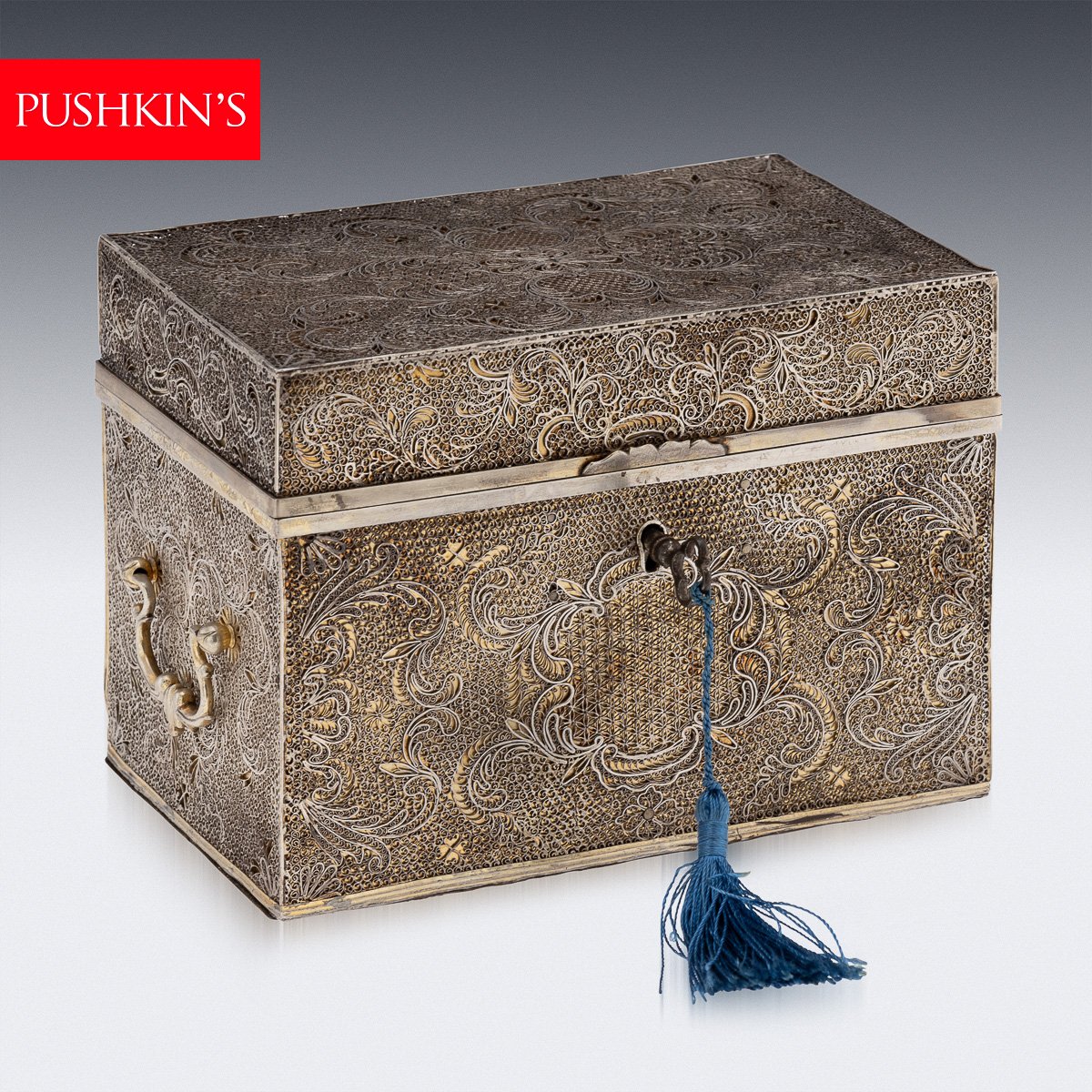 Image 1 of 23
Image 1 of 23

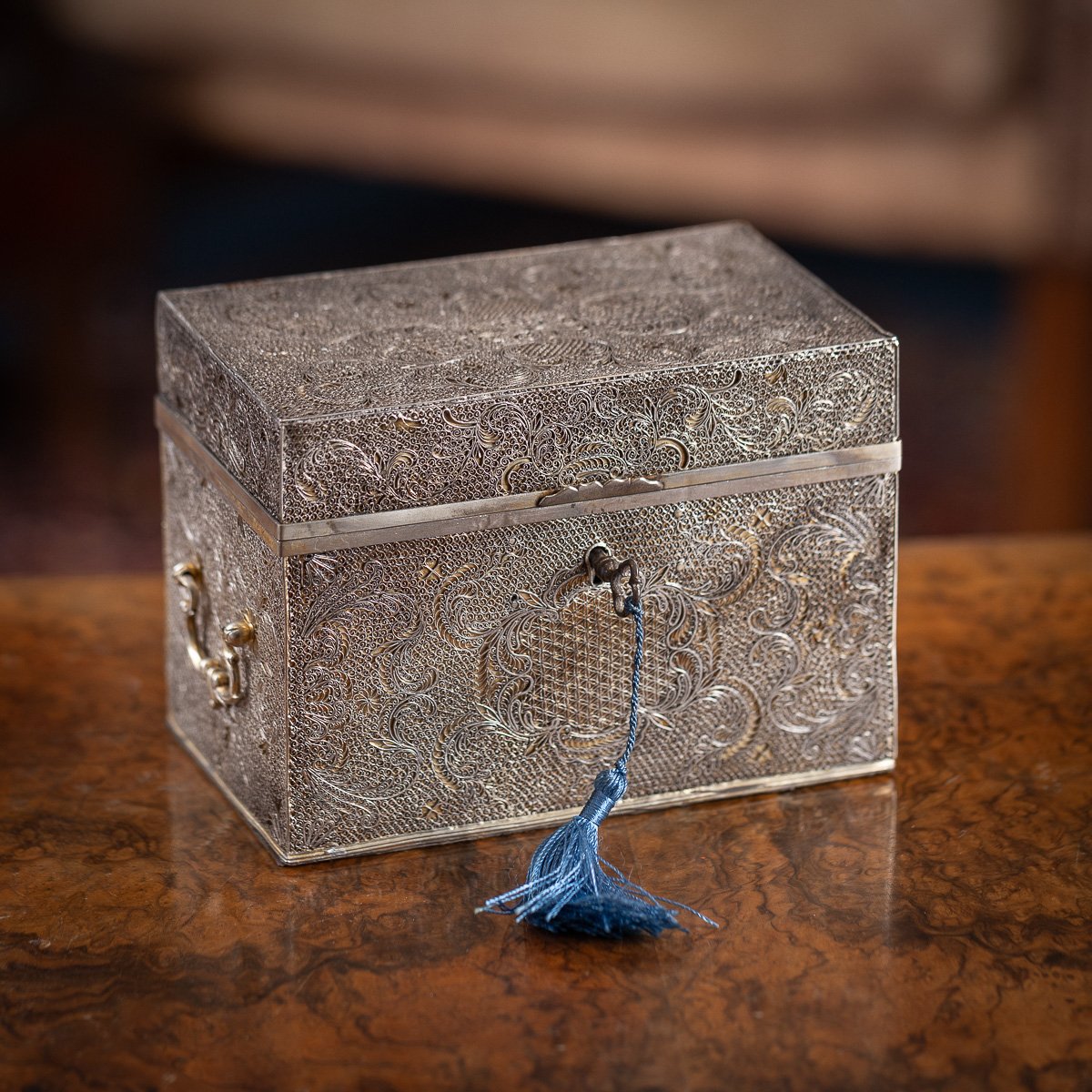 Image 2 of 23
Image 2 of 23

 Image 3 of 23
Image 3 of 23

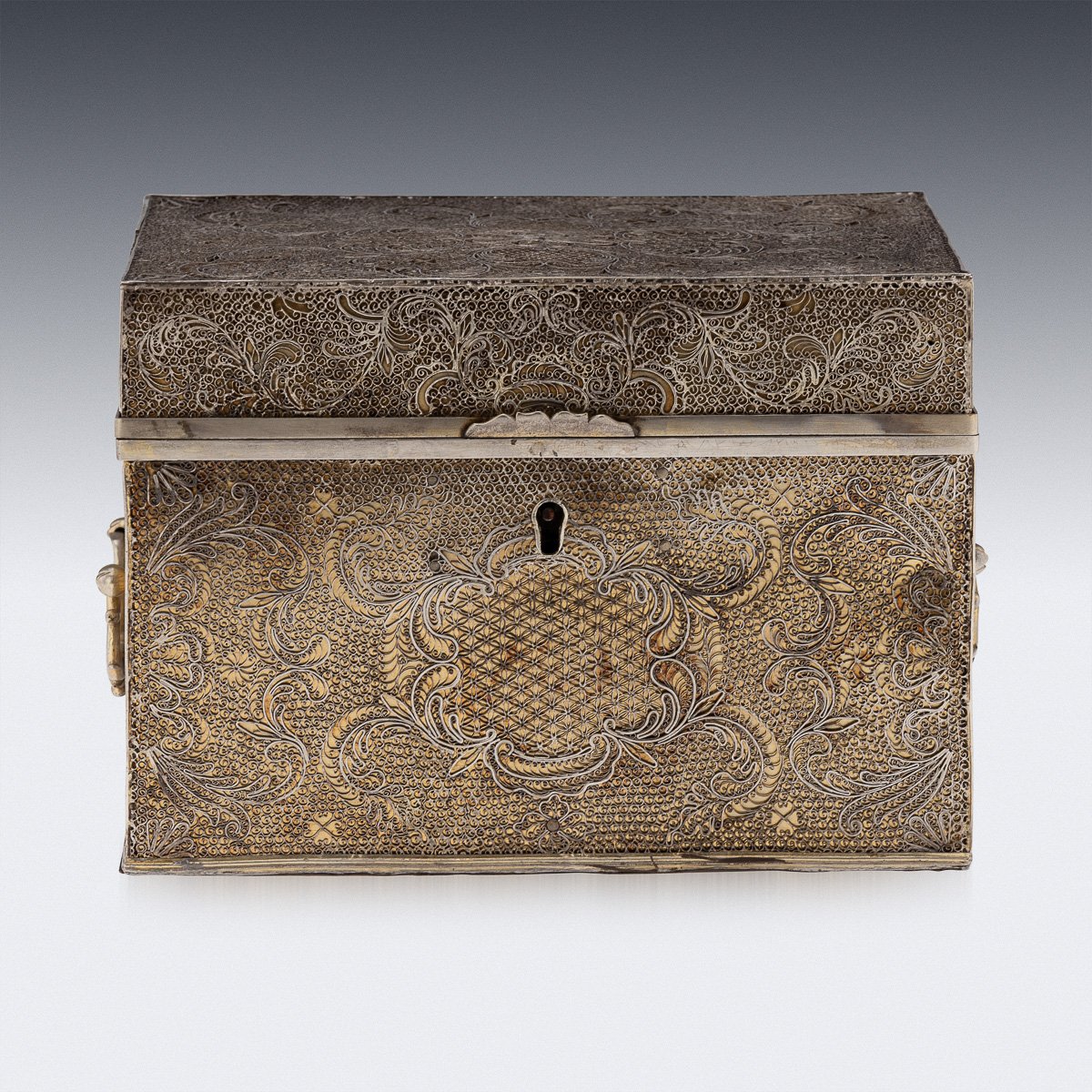 Image 4 of 23
Image 4 of 23

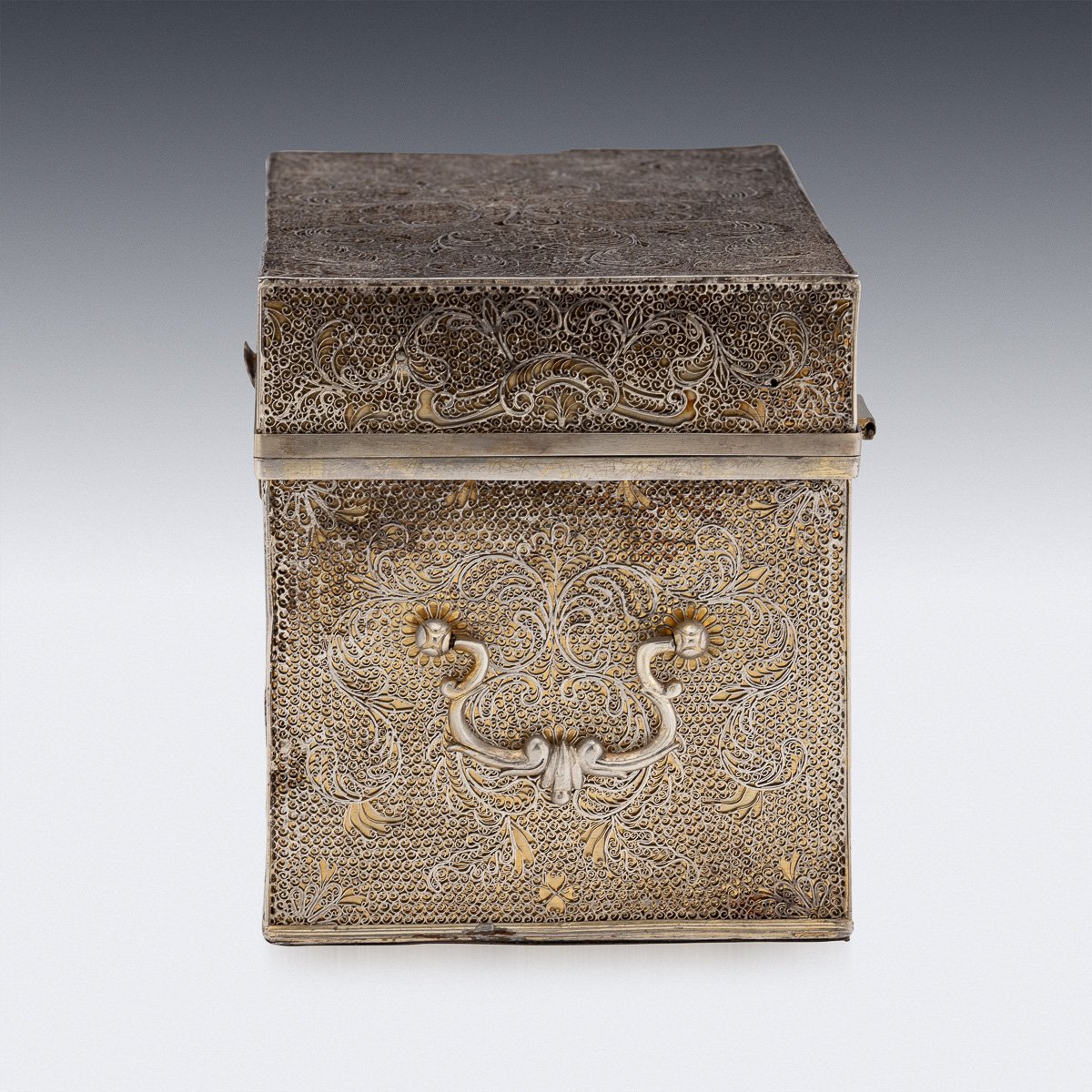 Image 5 of 23
Image 5 of 23

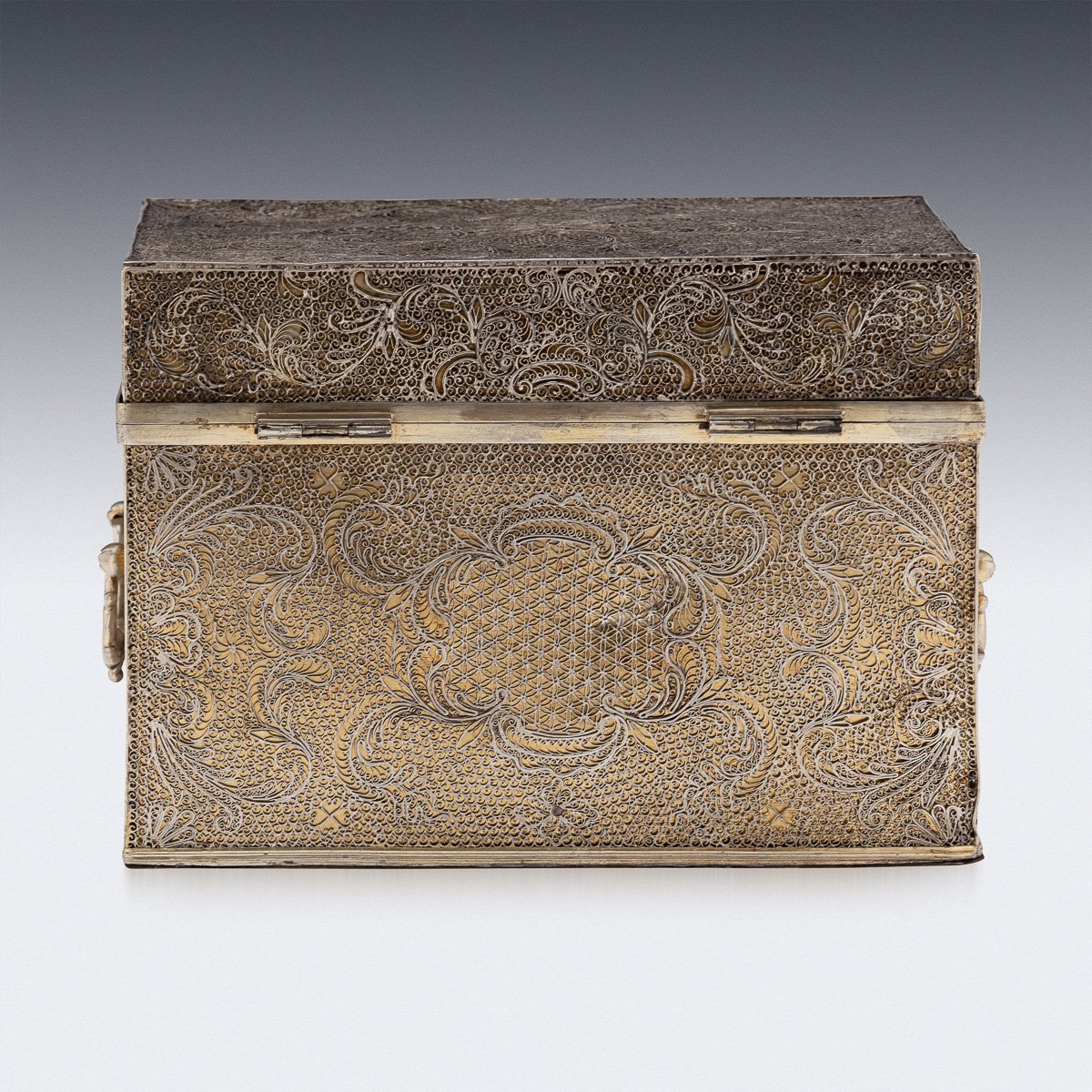 Image 6 of 23
Image 6 of 23

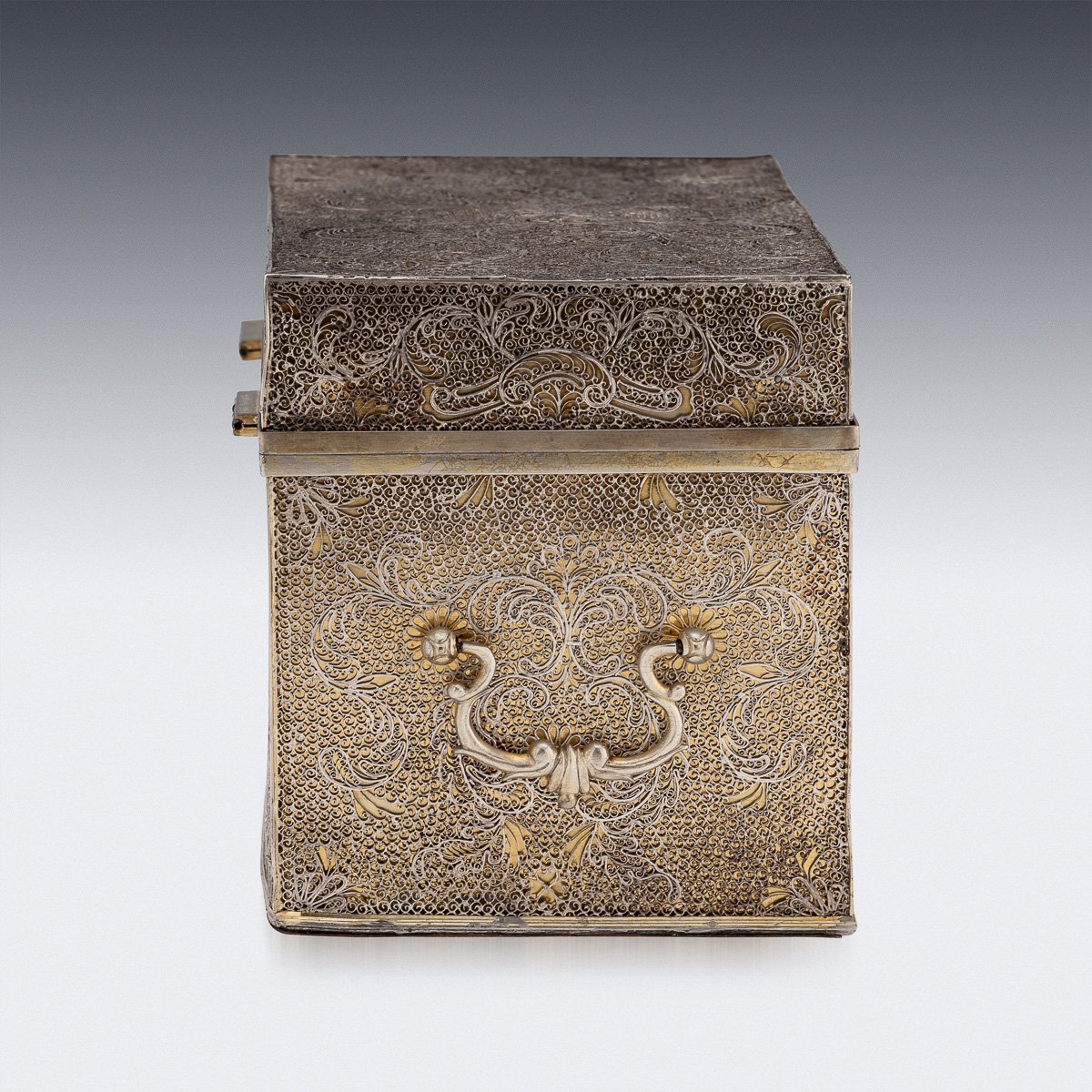 Image 7 of 23
Image 7 of 23

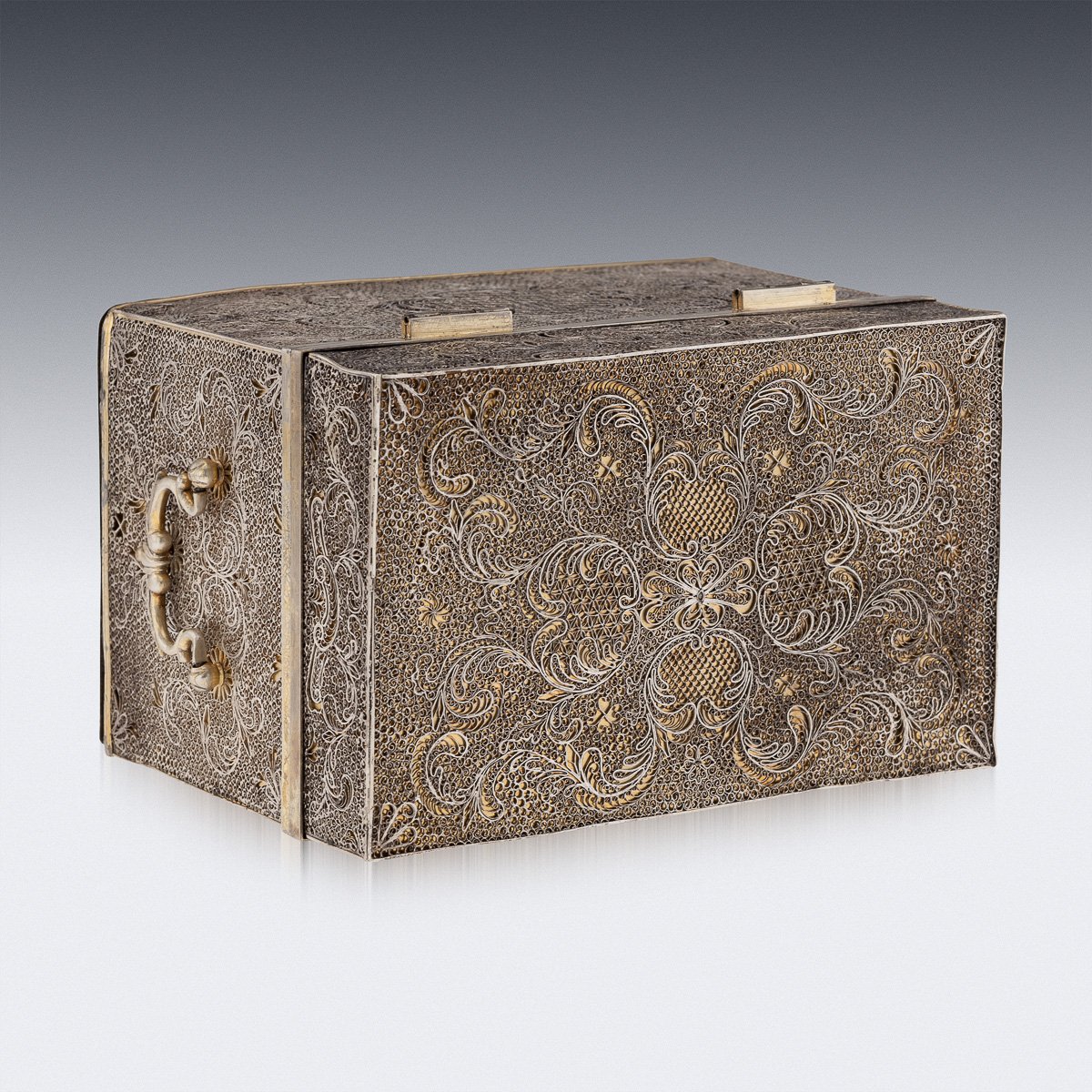 Image 8 of 23
Image 8 of 23

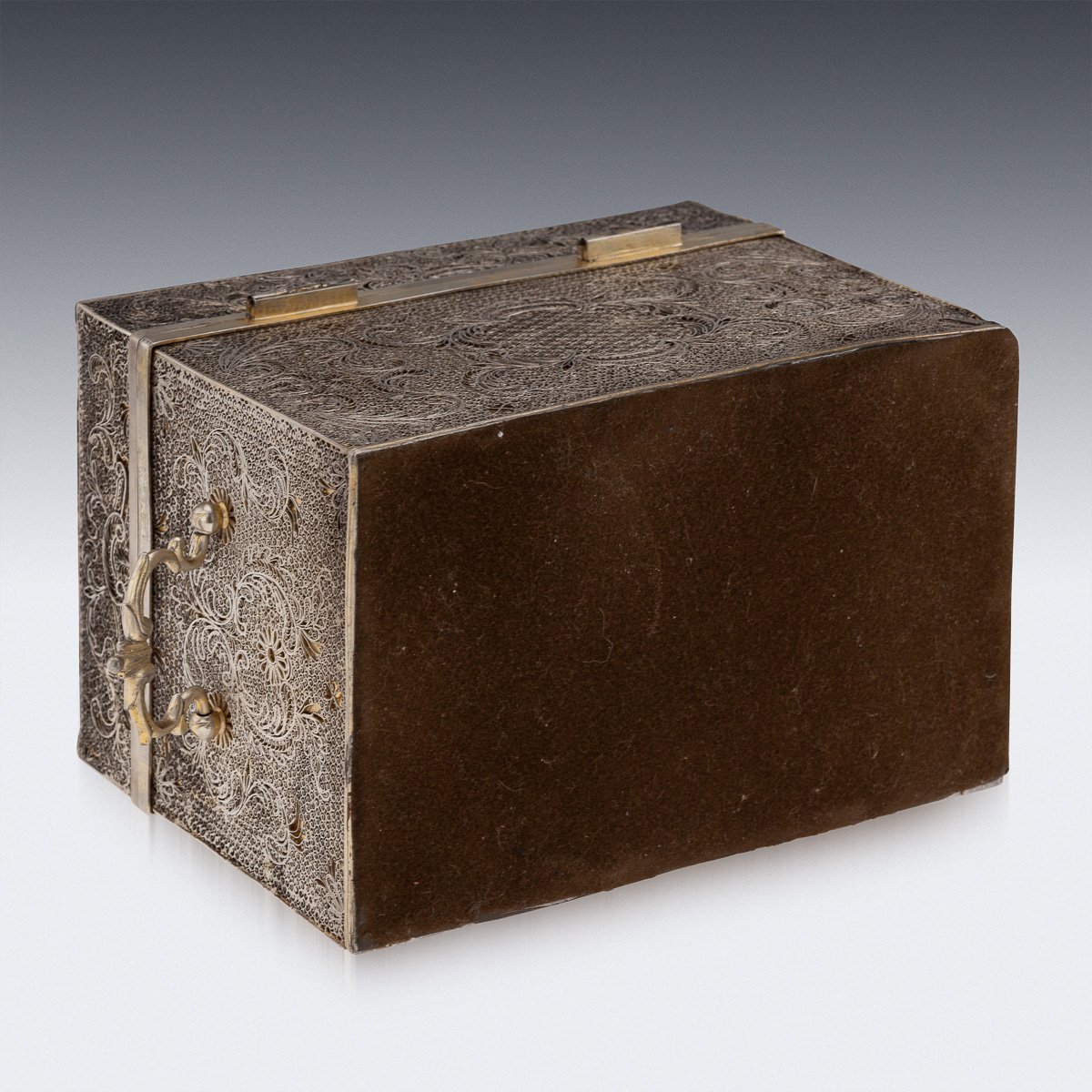 Image 9 of 23
Image 9 of 23

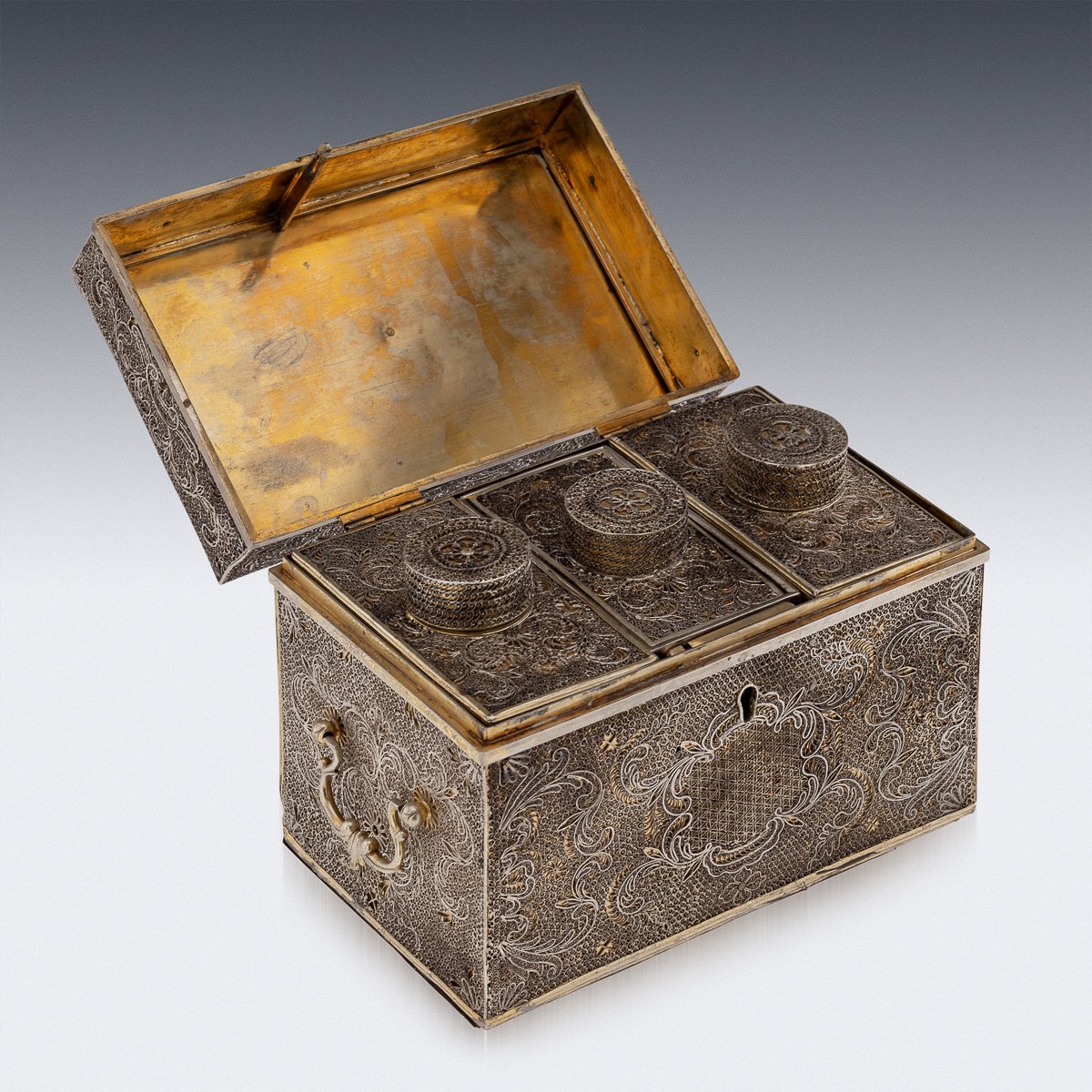 Image 10 of 23
Image 10 of 23

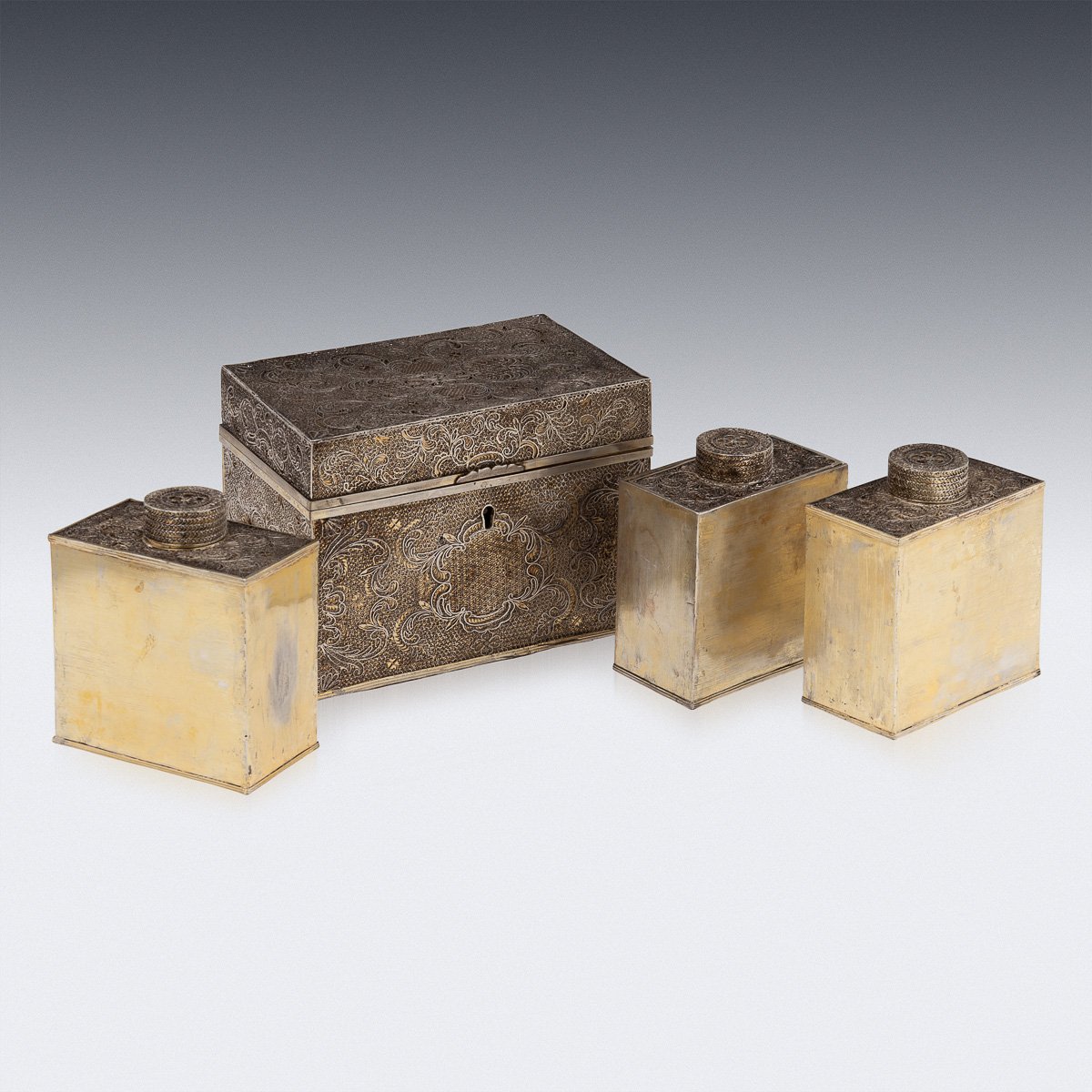 Image 11 of 23
Image 11 of 23

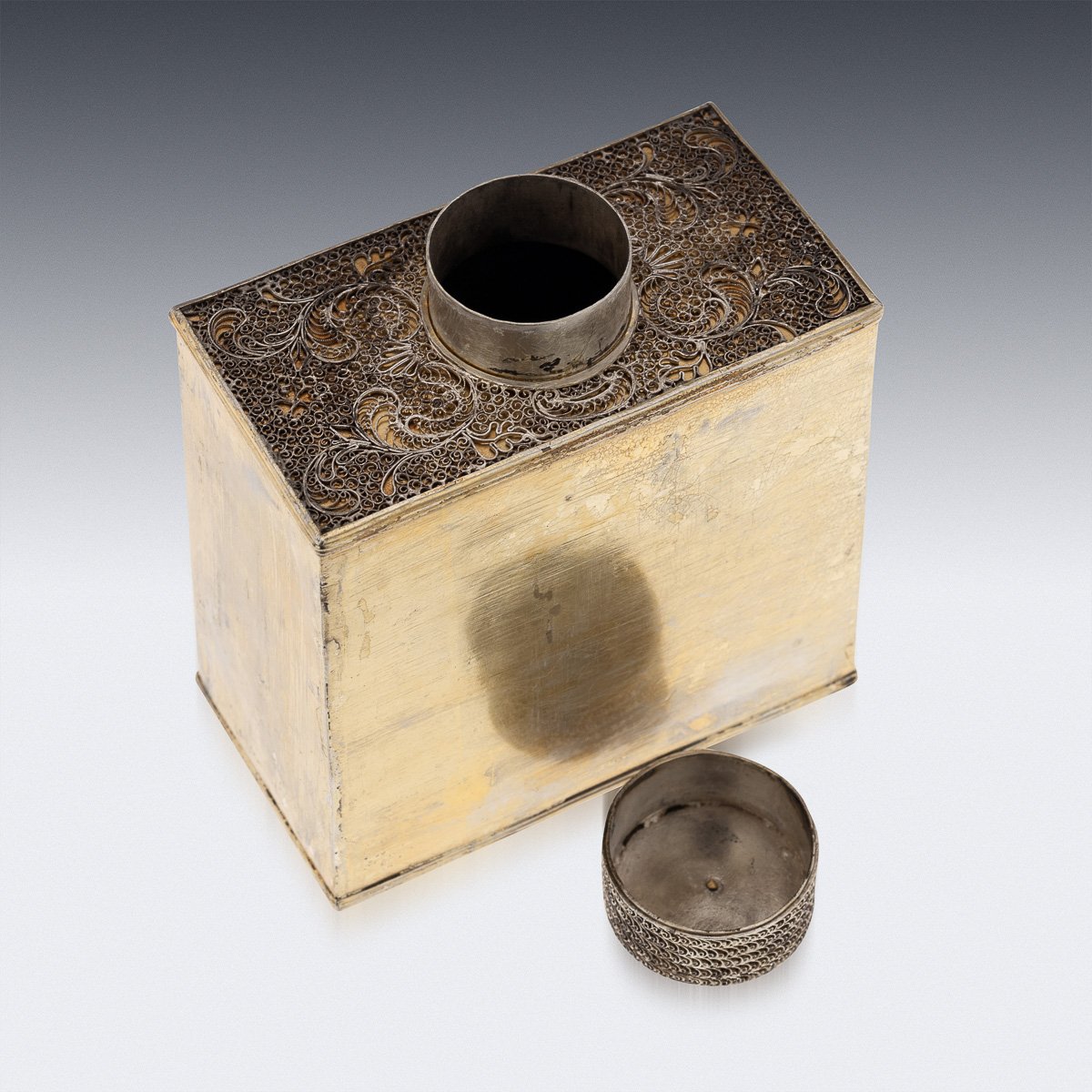 Image 12 of 23
Image 12 of 23

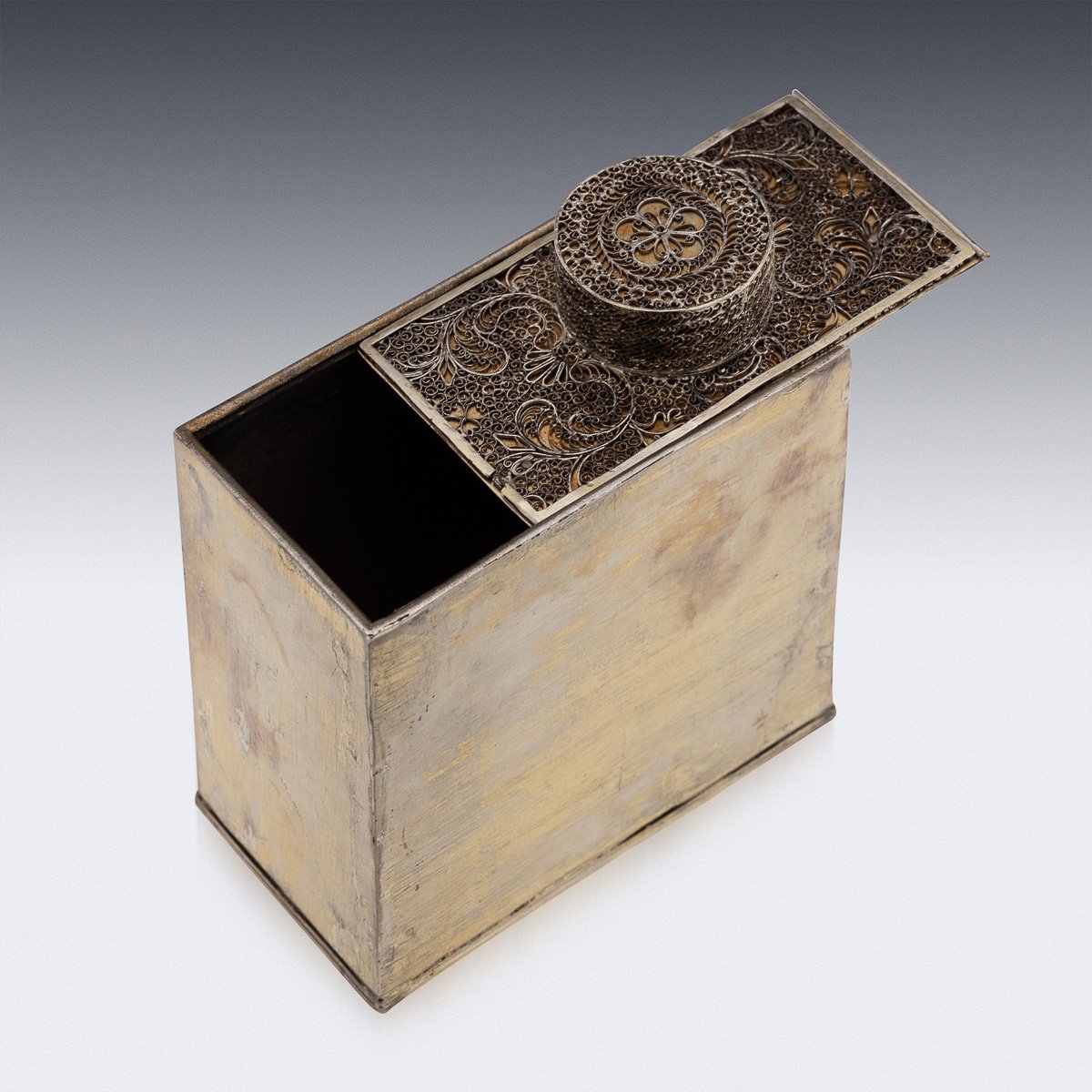 Image 13 of 23
Image 13 of 23

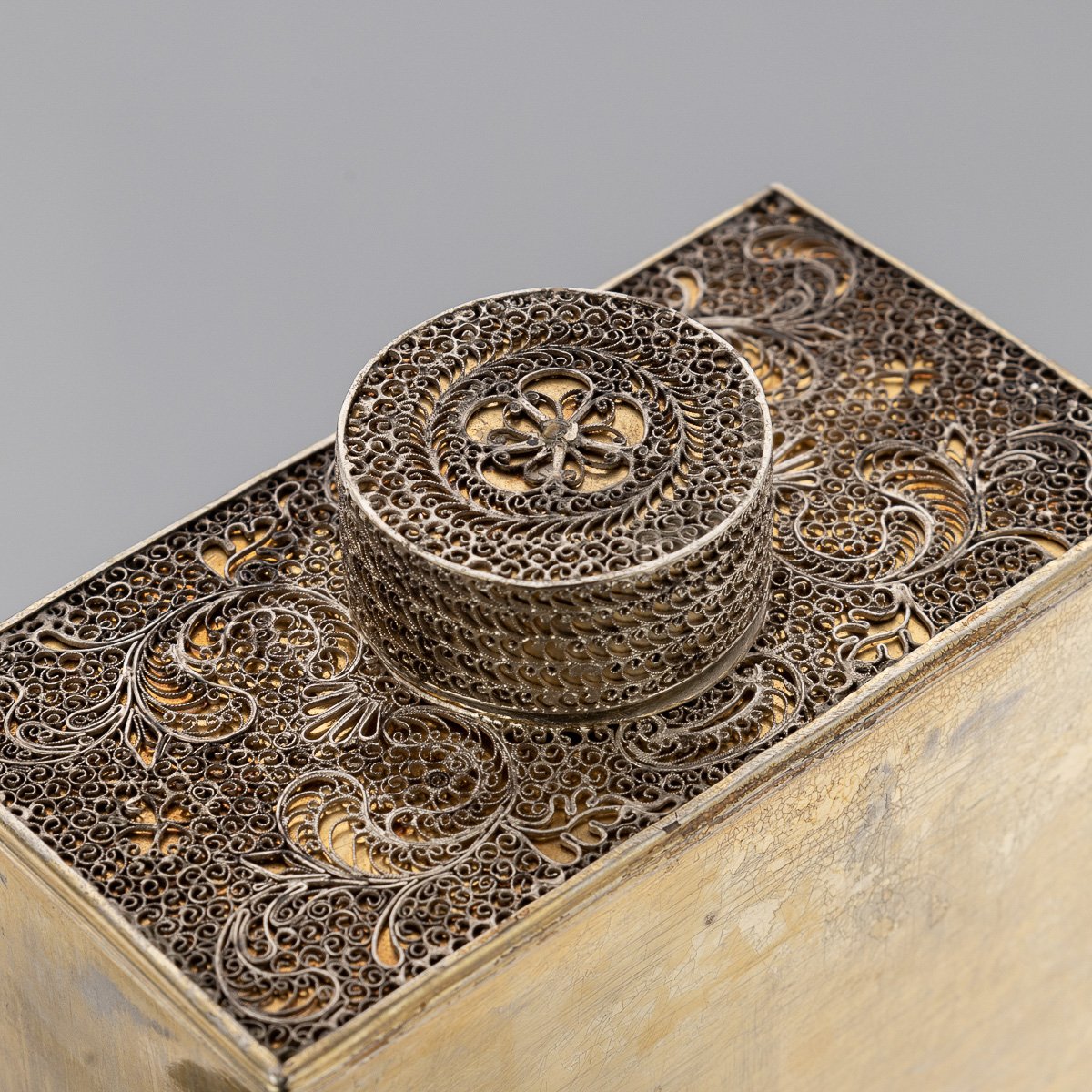 Image 14 of 23
Image 14 of 23

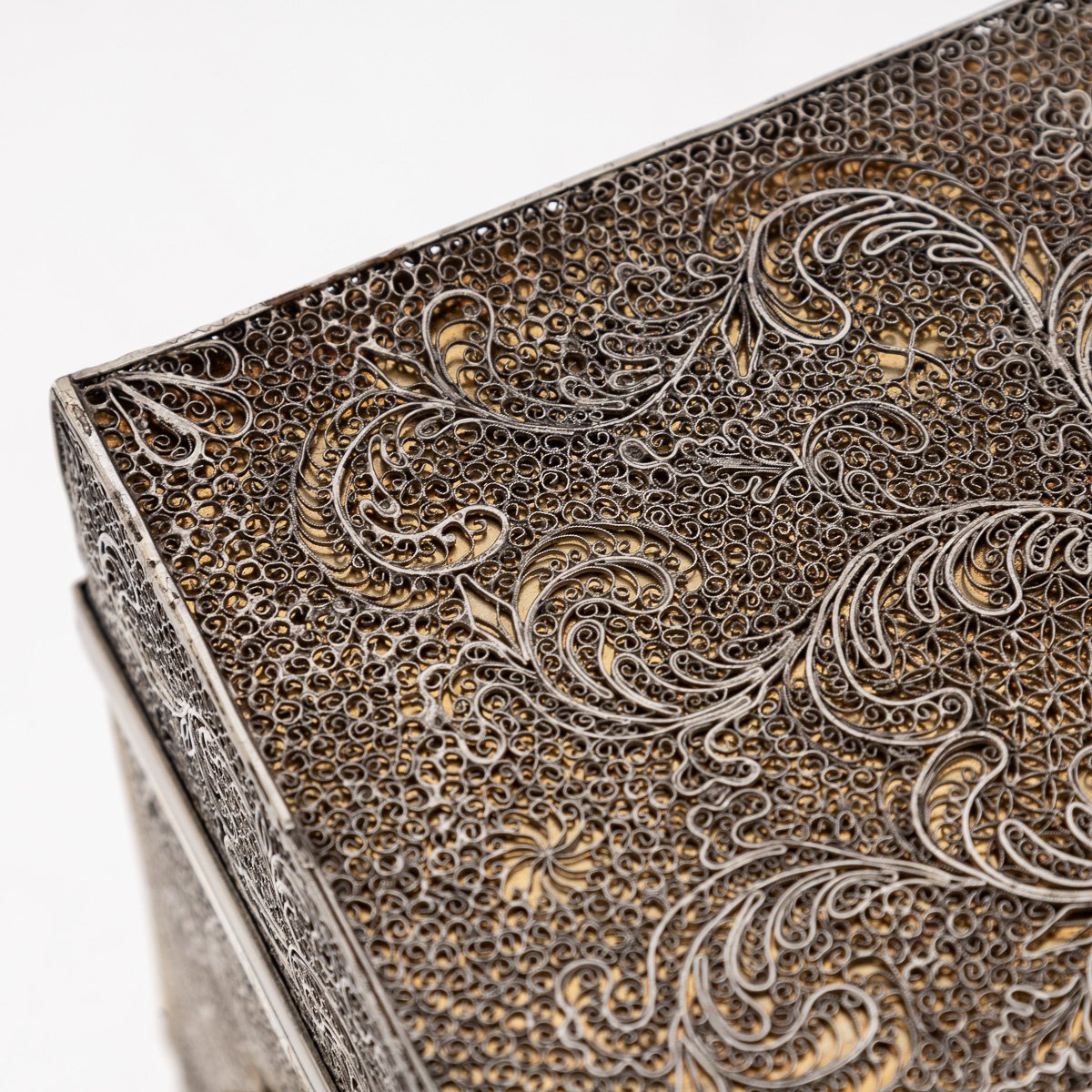 Image 15 of 23
Image 15 of 23

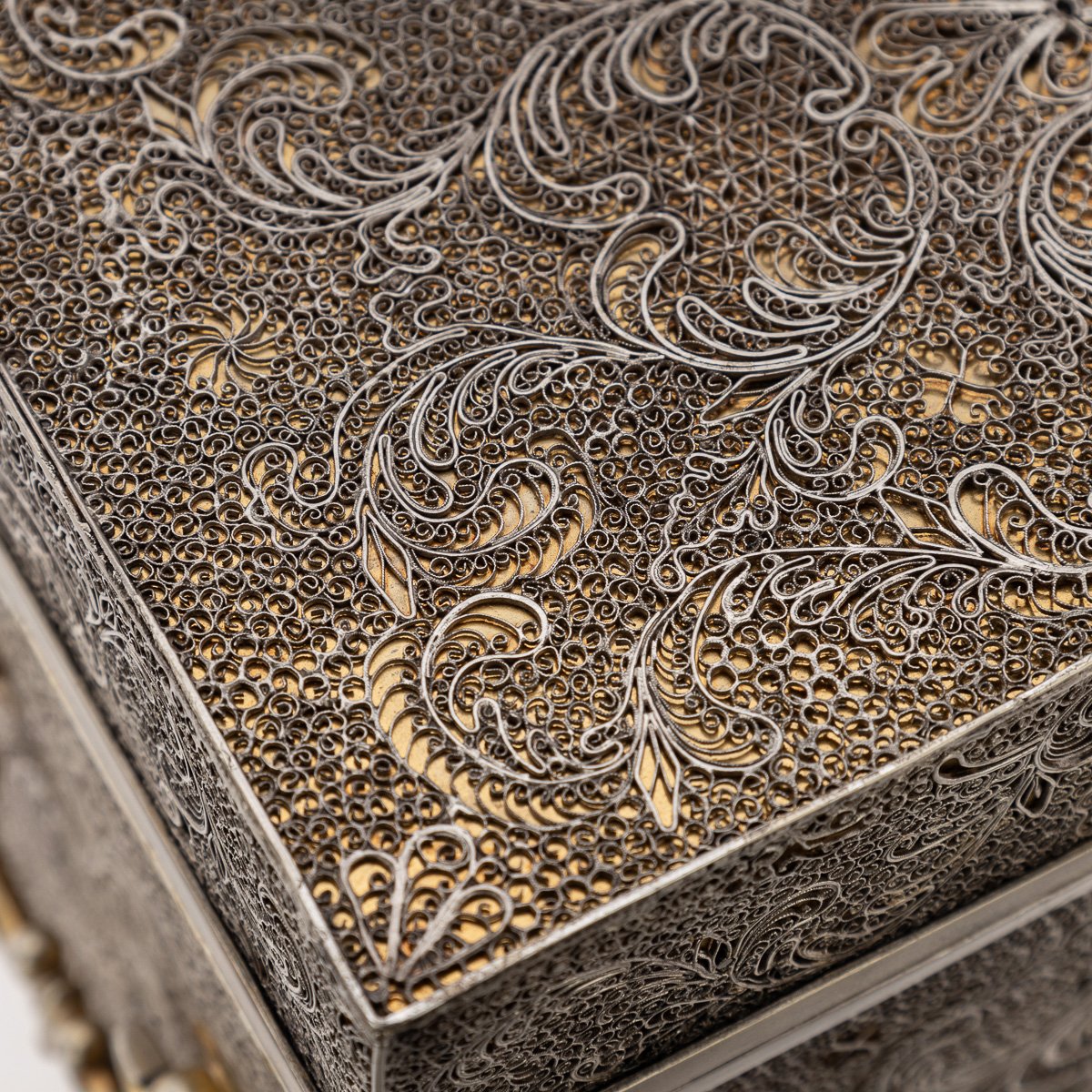 Image 16 of 23
Image 16 of 23

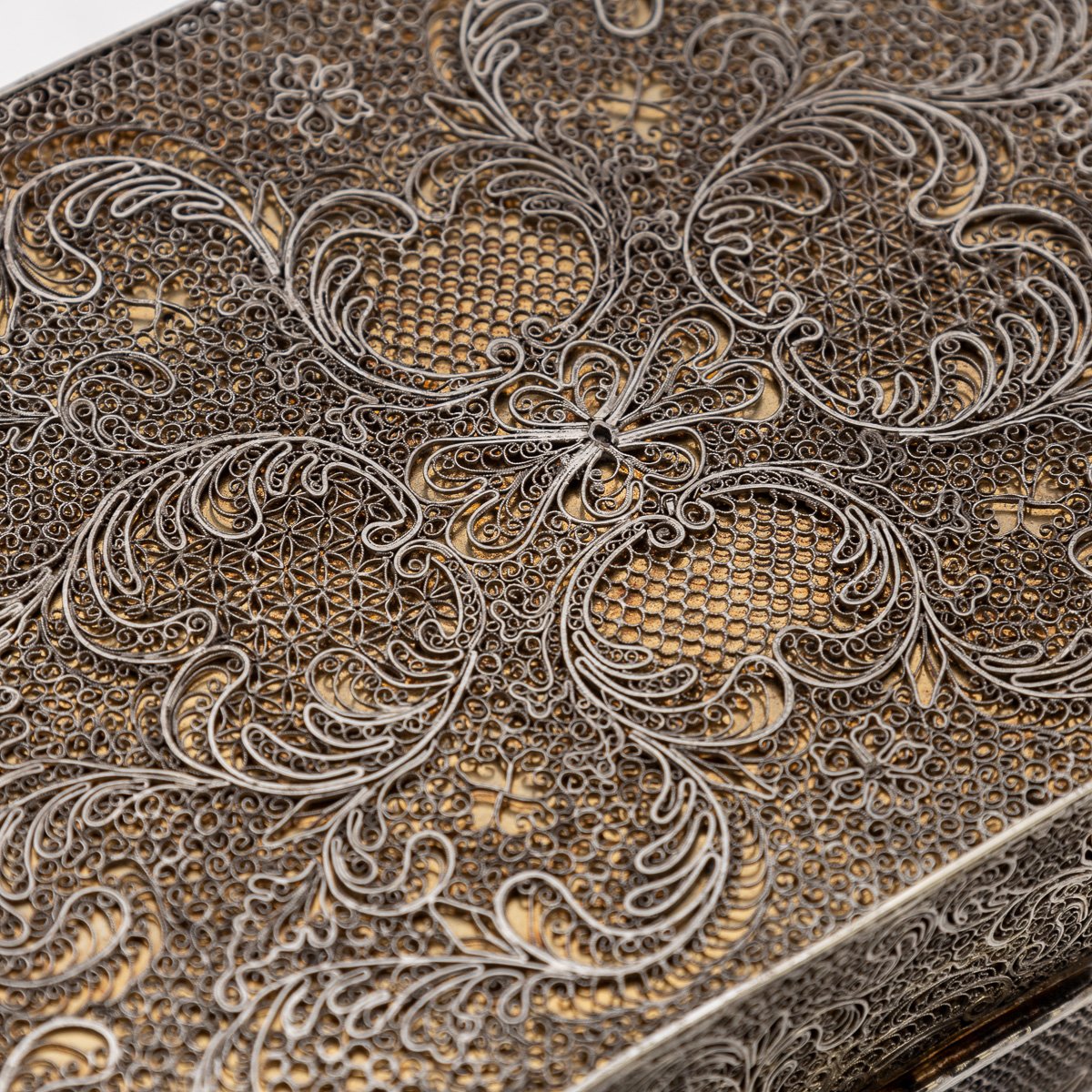 Image 17 of 23
Image 17 of 23

 Image 18 of 23
Image 18 of 23

 Image 19 of 23
Image 19 of 23

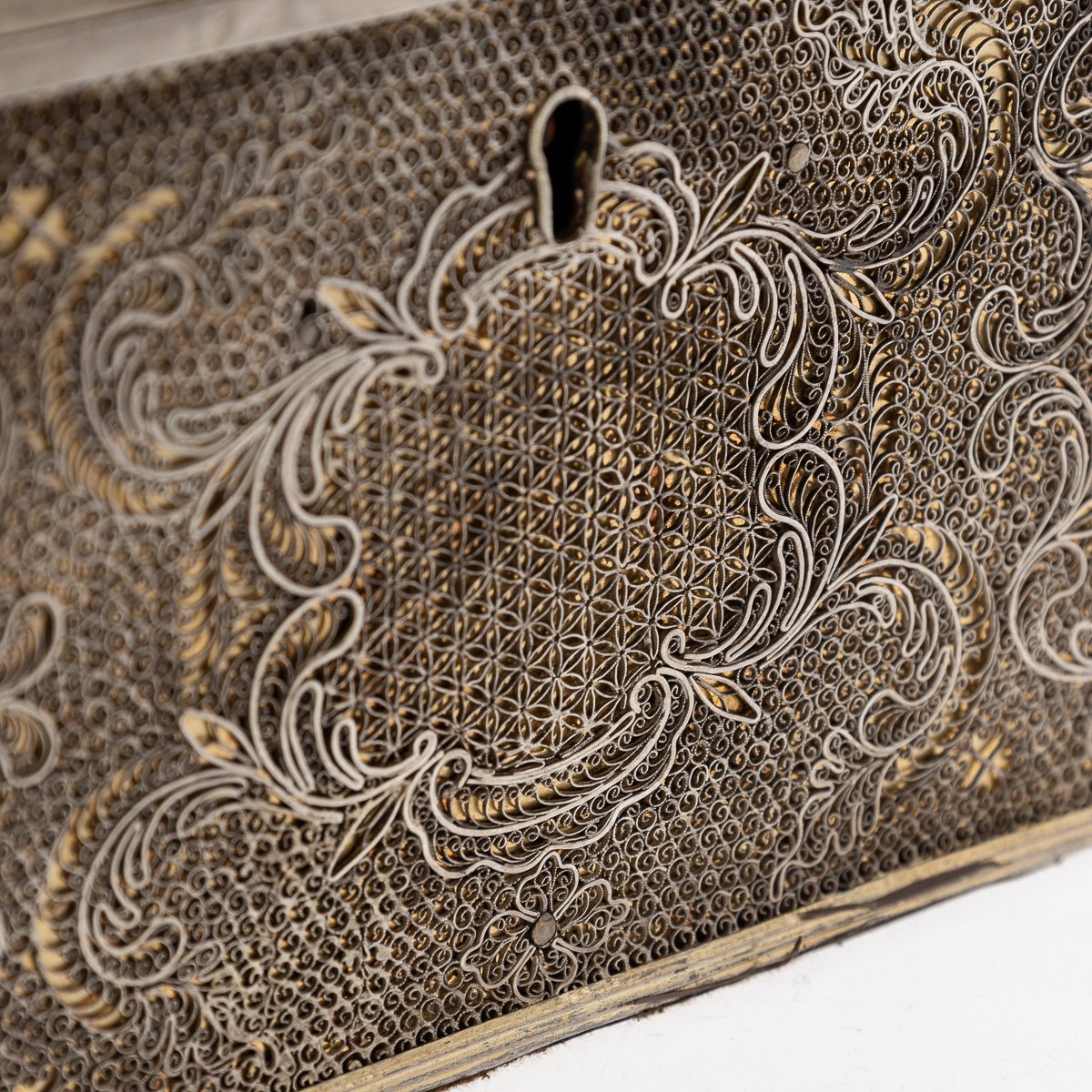 Image 20 of 23
Image 20 of 23

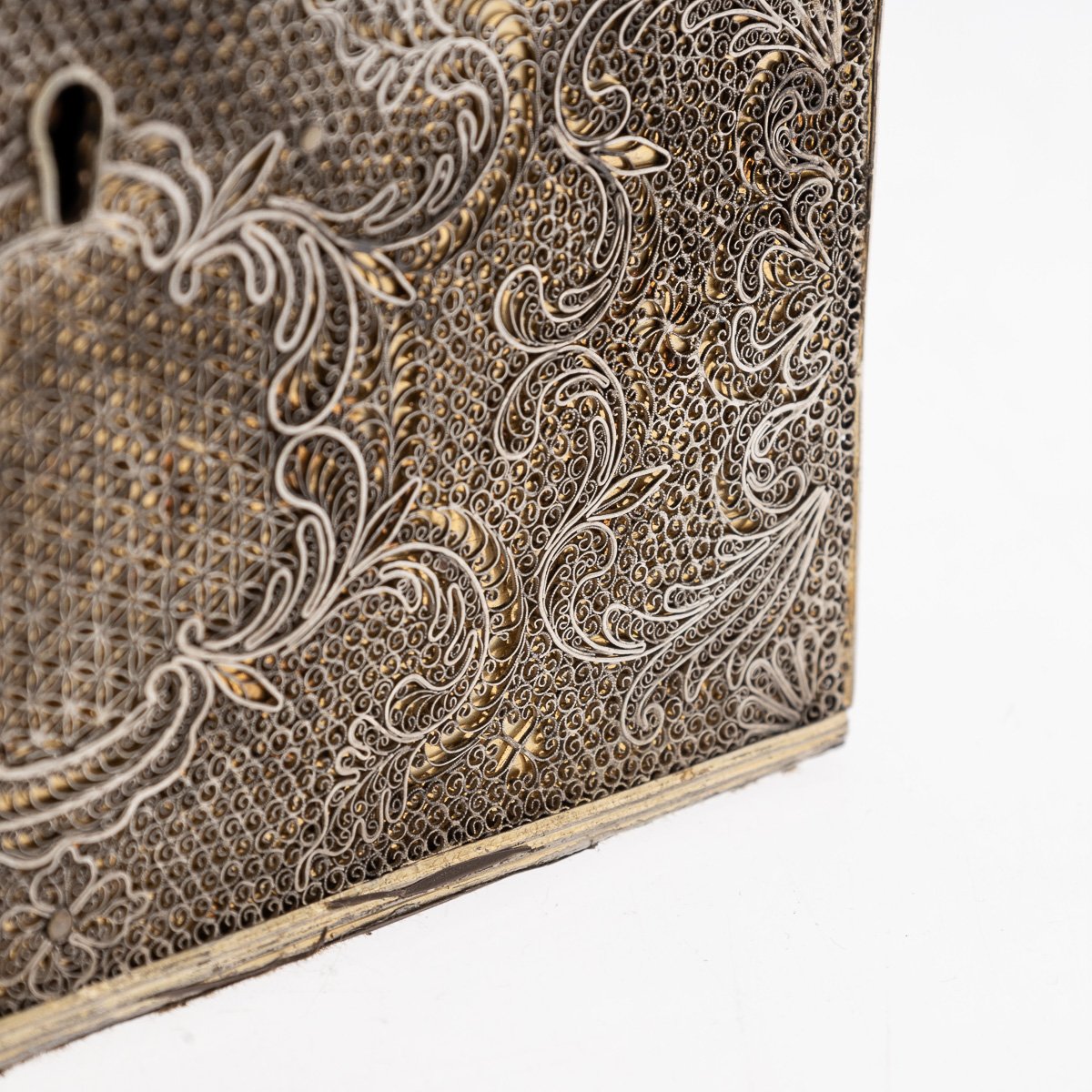 Image 21 of 23
Image 21 of 23

 Image 22 of 23
Image 22 of 23

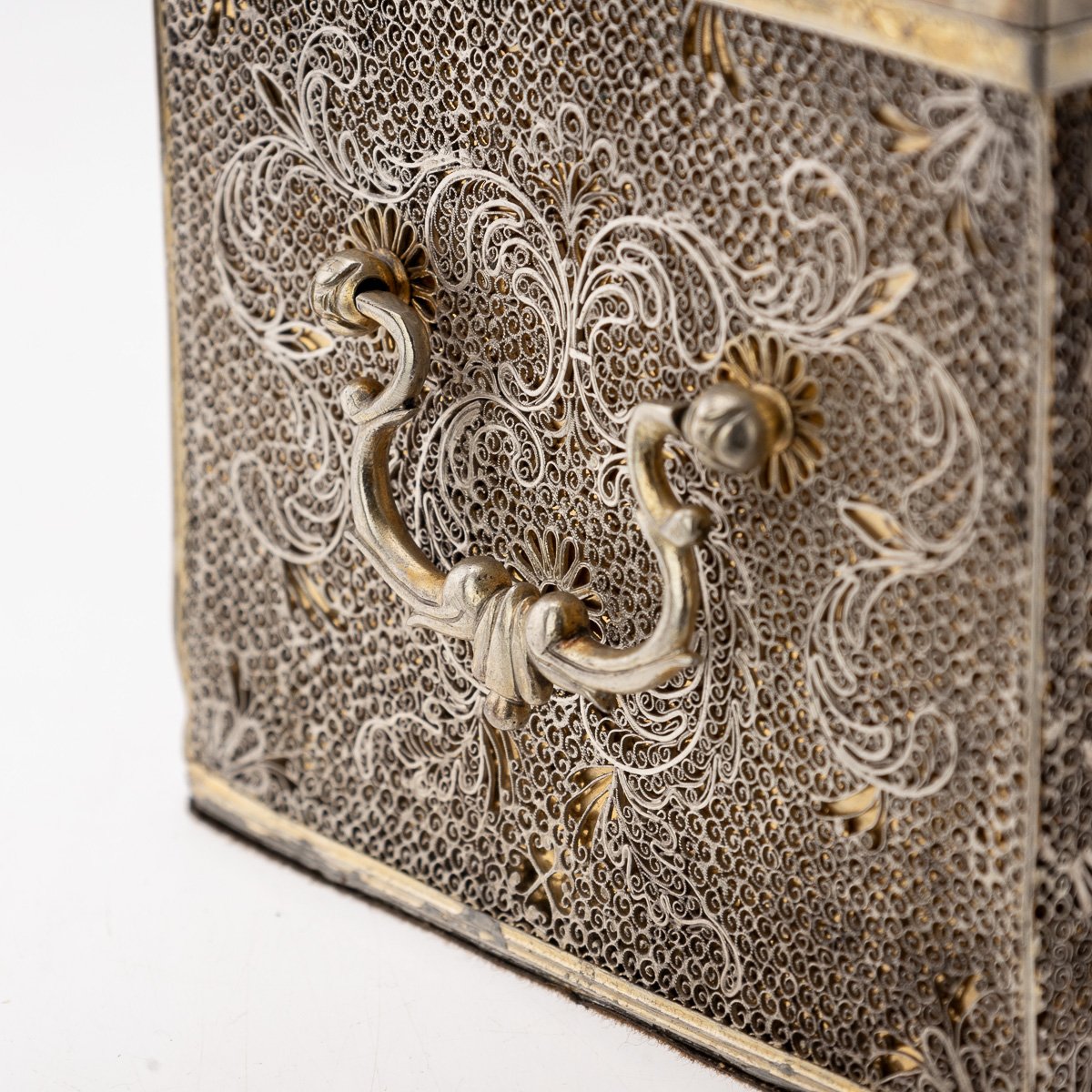 Image 23 of 23
Image 23 of 23
























ANTIQUE 17thC INDO-PORTUGUESE SOLID SILVER FILIGREE TEA CHEST, GOA c.1680
An Important 17th Century Indian (Goa) Solid Silver-Gilt Filigree Tea Caddy Chest. Of exceptional craftsmanship, this rare rectangular tea caddy chest is fashioned from solid silver, richly gilt, and decorated in exquisite filigree. Each panel is densely adorned with finely worked, scrolling foliate motifs composed of flattened and twisted wire, demonstrating the meticulous technique and stylistic precision typical of Goan silversmiths in the late seventeenth century. Two elegantly cast side handles complement the intricate surface, while the chest is secured at the front with a hinged clasp and key.
Upon lifting the lid, also filigreed and edged with floral detailing, the interior reveals three individual lidded tea caddies. Ingeniously fitted, the left and right decanters lift out independently, while the central compartment is designed to slide laterally before being removed. While the sides of the caddies are plain, they are entirely gilt, echoing the box’s opulent finish and providing a striking visual contrast to the filigree exterior.
Reference Number: J11070
An Important 17th Century Indian (Goa) Solid Silver-Gilt Filigree Tea Caddy Chest. Of exceptional craftsmanship, this rare rectangular tea caddy chest is fashioned from solid silver, richly gilt, and decorated in exquisite filigree. Each panel is densely adorned with finely worked, scrolling foliate motifs composed of flattened and twisted wire, demonstrating the meticulous technique and stylistic precision typical of Goan silversmiths in the late seventeenth century. Two elegantly cast side handles complement the intricate surface, while the chest is secured at the front with a hinged clasp and key.
Upon lifting the lid, also filigreed and edged with floral detailing, the interior reveals three individual lidded tea caddies. Ingeniously fitted, the left and right decanters lift out independently, while the central compartment is designed to slide laterally before being removed. While the sides of the caddies are plain, they are entirely gilt, echoing the box’s opulent finish and providing a striking visual contrast to the filigree exterior.
Reference Number: J11070
An Important 17th Century Indian (Goa) Solid Silver-Gilt Filigree Tea Caddy Chest. Of exceptional craftsmanship, this rare rectangular tea caddy chest is fashioned from solid silver, richly gilt, and decorated in exquisite filigree. Each panel is densely adorned with finely worked, scrolling foliate motifs composed of flattened and twisted wire, demonstrating the meticulous technique and stylistic precision typical of Goan silversmiths in the late seventeenth century. Two elegantly cast side handles complement the intricate surface, while the chest is secured at the front with a hinged clasp and key.
Upon lifting the lid, also filigreed and edged with floral detailing, the interior reveals three individual lidded tea caddies. Ingeniously fitted, the left and right decanters lift out independently, while the central compartment is designed to slide laterally before being removed. While the sides of the caddies are plain, they are entirely gilt, echoing the box’s opulent finish and providing a striking visual contrast to the filigree exterior.
Reference Number: J11070
ADDITIONAL INFORMATION
This chest exemplifies a hybrid aesthetic European form fused with South Asian artisanal technique, typical of silver objects produced under the Portuguese influence in Goa during the height of the Indo-Portuguese trade. The filigree style, distinguished by a combination of broad wirework and intricate twisting, has traditionally been attributed to Goan workshops, although scholarship, such as that of Menshikova (2006, p. 43), notes that such works may also have been produced by Chinese or Muslim craftsmen in Southeast Asia, including Batavia, and likely traded by the Dutch East India Company (VOC).
Comparative examples strongly support an attribution to Goa. A closely related and larger filigree cabinet with nearly identical wirework, ball feet, and hinge design is held in the Khalili Collection and illustrated in Rogers (2007, p. 242, no. 283). This cabinet has been exhibited at major institutions, including L’Institut du Monde Arabe in Paris and the Art Gallery of New South Wales in Sydney, and is believed to originate from the same workshop as the present piece. Rogers further attributes the work to a Muslim artisan from Gujarat, a region renowned for its long-standing tradition of fine filigree silverwork.
Other closely related examples include:
A filigree casket in the Hermitage Museum, St Petersburg, recorded as having entered the imperial collection in 1789 (Menshikova, 2006, p. 114).
A comparable casket in the Fries Museum, Leeuwarden, Netherlands.
A silver filigree casket with ball feet and rosette locking mechanism, though with a domed lid, illustrated in Jordan (1996, p. 214), also attributed to 17th-century India.
A related casket in the collection of the Museu Nacional de Arte Antiga, Lisbon (inv. no. 67), donated by J. Kugel in 1953, also attributed to the same period.
The form of this tea caddy chest is European in design, yet the extraordinary filigree work places it firmly within the context of Indo-Portuguese decorative arts, representing one of the finest surviving examples of its type.
CONDITION
In Great Condition - Wear expected with age. Please refer to photographs.
SIZE
Height: 12.25cm // 4.8 inches
Width: 18cm // 7.1 inches
Depth: 11.5cm // 4.5 inches
Weight: 1640g // 52.8 ozt
